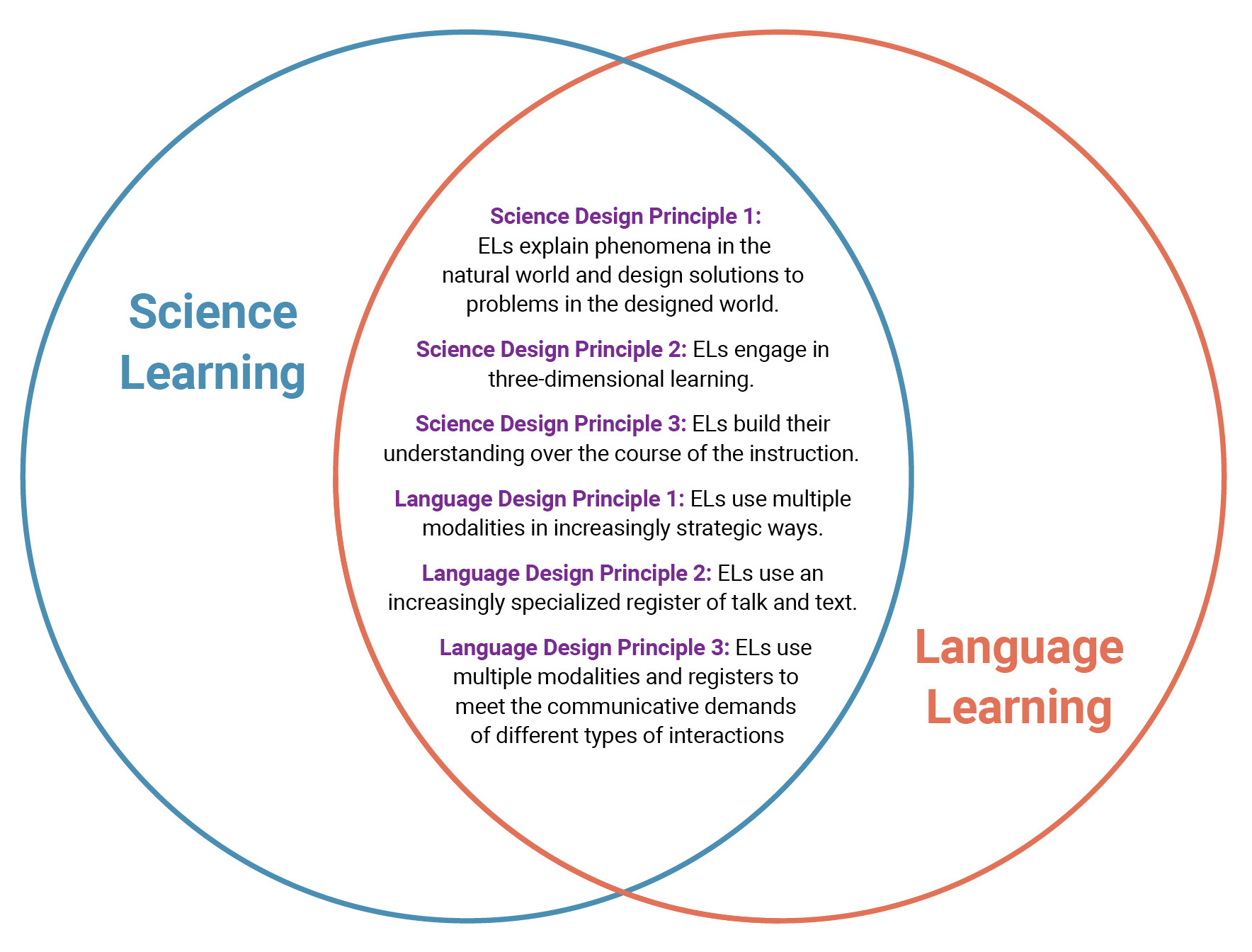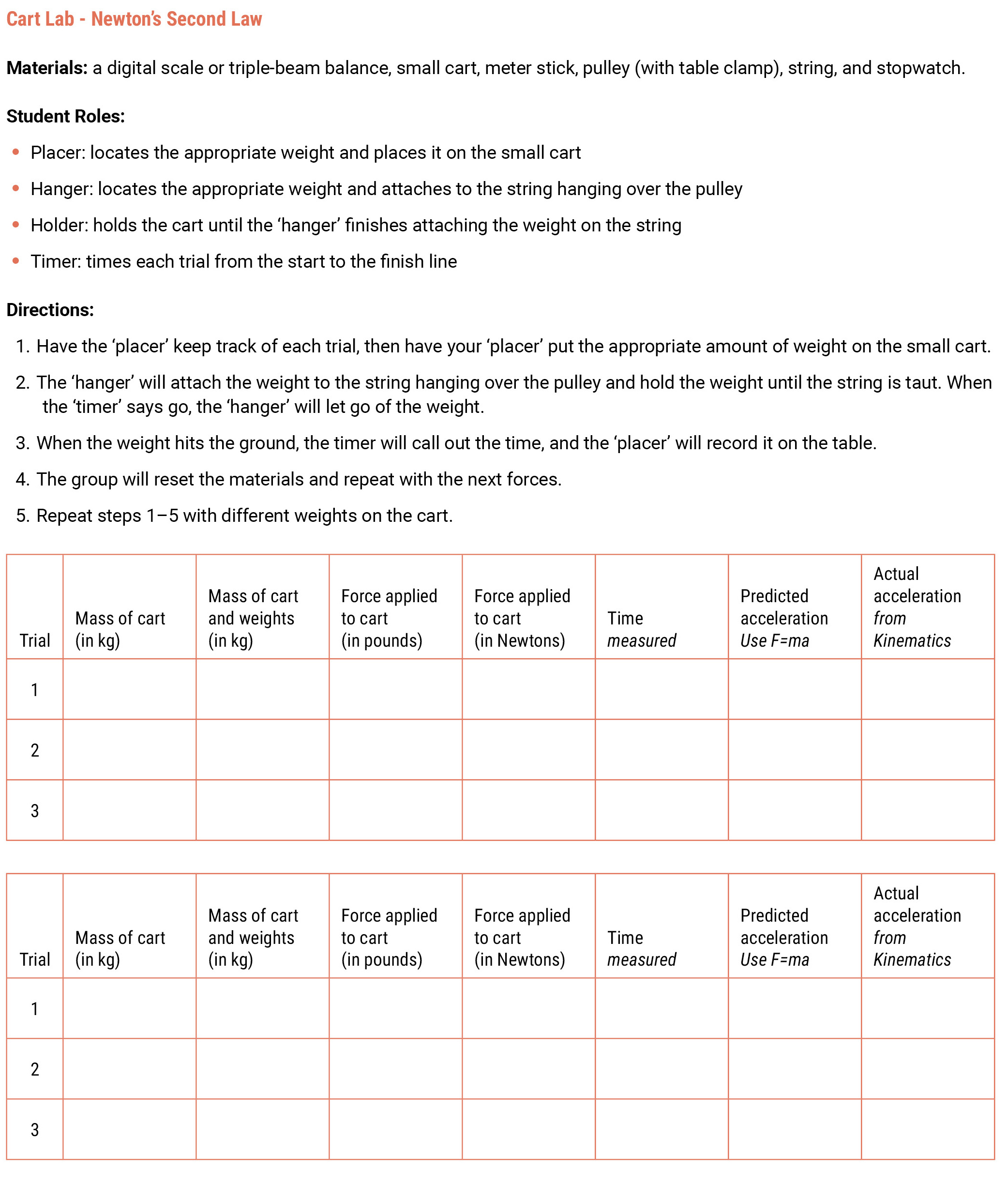feature
Shattering the Language Barrier
English Learners and the Next Generation Science Standards
The Science Teacher—July/August 2023 (Volume 90, Issue 6)
By Yamil Ernesto Ruiz and Brooke A. Whitworth

Fair and equitable access to science education is necessary for every student leaving our schools and entering the increasingly technological workforce (ICSU 2011). However, there exists a notable and longstanding science achievement gap between our English learners (ELs) and non-EL students (NCES 2019). The National Center for Education Statistics reported in 2017 that ELs scored below average on the National Assessment for Educational Progress (NCES 2017). Additionally, ELs graduate at a rate of 67% nationally compared to 85% for non-EL students (NCES 2017). We know teacher practice is tightly connected to the success of all students (Whitworth and Chiu 2015), but this is especially true for our students learning English (Lara-Alecio et al. 2012). So how can our science instructional materials be modified to best support ELs?
Instructional materials development framework for ELs
The instructional materials development framework for ELs was advanced iteratively and in-field by Lee and her colleagues (2019) to develop NGSS-aligned instructional materials to support ELs in the science classroom. They began by exploring the language learning opportunities and demands inherent to the science and engineering practices (SEPs) to ultimately uncover learning design principles at the juncture between language learning and science learning. The framework presents three science design principles and three language design principles that are meant to be blended in mutually supportive ways as opposed to treated separately and are meant to be embedded in science instructional materials as opposed to leveraged occasionally (Lee et al. 2019). Figure 1 depicts the three science design principles and three language design principles.

The three science design principles and three language design principles.
In this article, we describe a lab activity implemented in the first author’s classroom to help students understand Newton’s second law of motion. Then, based on the framework described here, we offer three suggestions for altering the activity to better support ELs in your science classroom. These modifications serve as an example of how any typical science lab activity and the instruction around it could be modified to support not just ELs but all your students.
Newton’s second law of motion lab activity
The specific standard guiding instruction in this example lesson requires students to obtain and analyze data to support the claims made by Newton’s second law of motion (Table 1; see Online Connections). Essentially, we want all students to understand the proportional nature between an unbalanced force applied on an object and its resulting non-zero acceleration. Our students explore the nature of this type of motion by applying varying amounts of force to a small cart on longer lab tables or on the classroom floor or in a hallway and then calculating the resulting acceleration in multiple ways (Figure 2).

The lab sheet.
| Table 2. Resources for Finding Phenomena | ||||||||||||||||||
|---|---|---|---|---|---|---|---|---|---|---|---|---|---|---|---|---|---|---|
|
To set this up, break students into groups of four and assign roles; roles are described in detail in Figure 2. Based on these roles, you can decide which students may best serve in each role or you can let students select their roles. Try for a balance in numbers between native English-speaking students and your ELs as you create your groups.
You can vary the mass on the cart by adding small weights. This way students can begin to understand the effect mass has on the motion of the cart. This lab activity highlights many fundamental aspects of the nature of motion on our planet. First, it can lead into some great discussions about the nature of inertia, matter, and mass. Second, it can reveal how the acceleration of an object depends on the forces acting on that object.
Modifying science lab activities to support ELs
Based on the instructional materials development framework for ELs, there are three science design principles that can be used to modify lab activities:
- anchoring the lesson through a phenomenon,
- leveraging three-dimensional learning, and
- developing register through discourse.
Here we describe how the lab activity could be modified using these three design principles as an example of how any typical lab activity could be modified to meet the needs of all students, including ELs.
Anchoring the lesson through a phenomenon
One of the key takeaways from Lee’s framework (Lee et al. 2019) is that anchoring the lesson through a phenomenon provides the structure necessary for ELs to engage in the lesson in a meaningful way. This recommendation is given based on the National Research Council’s (2012) statements that all science students should be able to provide “consistent theoretical descriptions” over a varied range of phenomena in the real world. With the development and implementation of the NGSS, phenomena have become an essential aspect of science instruction (Krajcik 2015). There has been an important shift in science instruction away from focusing on just understanding content to supporting students in explaining phenomena and designing solutions (Duncan and Cavera 2015). In this article we define, phenomena as “observable events that occur in the universe and that we can use our science knowledge to explain or predict” (Achieve 2016, p. 1).
Our first modification is to anchor this lesson by sharing a video with our students that is hosted on thewonderofscience.com. The video is titled “The Walking Table,” and it shows a demonstration of a unique table designed and built by Dutch craftsmen Lotty Lindeman and Wouter Scheublin. This phenomenon is demonstrative of the cause-and-effect relationship between an unbalanced force and resulting motion. It also demonstrates the differences between pushing and pulling forces and how they can work together to create motion.
Lee and colleagues (2019) further suggest making these phenomena local and relevant to the prior experiences of the students in your classroom. These recommendations help our EL population but are also great for all our students. The phenomenon of motion created in this video (through the force applied by one of the craftsmen, which is simultaneously resisted by the friction between the feet of the table and the ground) is both engaging and relevant to many real-world examples. If you teach in a mainly rural area, there are plenty of examples that can elicit or activate prior knowledge (i.e. a stuck tractor, a stalled mower, a barrel of hay, etc.). Examples for our urban and suburban teachers may elicit less affective connections to prior experiences, but we can certainly share online footage of vehicles being pushed or towed and construction equipment bearing heavy loads of materials. Fortunately, with the implementation of the NGSS, many have already begun accumulating phenomena examples teachers can use with a variety of topics. As you consider how to incorporate phenomena into your own lessons, we have provided a list of potential resources for finding appropriate phenomena (Table 2).
Leveraging three-dimensional learning
The second science design principle suggests specifically connecting aspects of your lesson to each dimension (DCIs, CCs, and SEPs) of the NGSS. For students to effectively engage in three-dimensional learning, they must extensively use content-specific language. Some of these dimensions are more challenging for students to engage in than others, but when students use them in harmony, ELs can develop not just their scientific literacy but also engage in meaningful English language learning (Hakuta and Santos 2013).
In our example lesson, the DCI is: Newton’s second law accurately predicts changes in the motion of macroscopic objects. Thus, we suggest using the word force as often as possible and not substituting it with something like push or pull. We often replace some of our scientific terms with other useful synonyms, but in this case, it is valuable to be explicit and repetitive with the word force to model its proper use. We suggest this because many words in the English language have multiple meanings and are defined mainly within context. Thus, a term like force, which can mean to require someone to do something, can easily be misunderstood, misinterpreted, and misused by someone learning English as an additional language. Beyond being explicit with your language, restating Newton’s second law of motion in a direct, specific way may also help students. For example, a teacher might say
Newton’s second law of motion describes an important direct relationship between the unbalanced force applied on an object and its resulting acceleration. It also describes the inverse relationship between an object’s total mass and its resulting acceleration if the same force is applied.
Each of these mathematical relationships that are conveyed through the second law of motion can be experientially observed by your students through the activity shared.
For example, prior to the NGSS, the unifying nature of CCs were typically connections teachers only made with their “advanced” classes. However, these expectations are now embedded in the standards for all students. Incorporating CCs into lessons can be confusing for teachers because it is new, but it does not have to be difficult. The NGSS identifies appropriate CCs to focus on with each standard, which provides a focal area for teachers. For this lesson, the CC identified by the standard was cause and effect. Therefore, what are some specific aspects of this lesson we can connect to cause and effect?
We began by reminding students of other cause-and-effect relationships they have studied. Activating prior knowledge and connecting prior learning experiences help reinforce the larger role CCs encompass. Next, it is important to clarify that no motion (effect) ever initiates without an unbalanced force (cause). This understanding is developed in part by the experiment, but it should be explicitly referred to when debriefing the activity with your students in small groups or as a whole class. One specific way to address this in a whole-class discussion during the lesson is by posing the question “Why do things move?” The teacher can then use scaffolded questioning to guide students to their own conclusions that macroscopic objects at rest do not begin to move without a cause.
Lastly, and certainly most concrete, are the SEPs, which provide the best opportunity for ELs to purposefully use scientific language. To best support your ELs in this lesson, all students must have an opportunity to collect experimental data from an open investigation. You can scaffold the exploration by providing a research question (e.g., How is the motion of your cart affected by its mass and the force applied to it?) and by limiting the materials available to them. Then you should allow students to collaboratively interpret the results in a written or spoken conclusion statement. The analysis and interpretation of their observed data should go beyond the calculation of the resulting acceleration. You may also consider having students graph their data to further cement the direct and inverse relationships between the variables in Newton’s second law of motion. It is important to note that the original, unmodified version of this lab activity already provides all students with an opportunity to use scientific language because it incorporates active learning. Khourey-Bowers (2011) writes, “Active learning strategies transform learning from a private, unexamined event to a public, shared process within the classroom community” (p. 40). Students in this activity are required to manipulate their prior and expanding knowledge about the phenomena they are investigating.
Developing register through discourse
The third science design principle to meet the needs of ELs is to specifically plan ways in which students can practice their scientific language. In the area of linguistics, register specifically refers to the conventions required to meaningfully communicate using discipline-specific language (Solano-Flores 2006). All science teachers are innately aware that the language we use in our science classroom is different from the language used outside the science classroom. Those differences are likely to be differences in register. One particular challenge we face as science educators is to adequately prepare our students to grapple with scientific language (Friedl and Koontz 2005). This includes speaking and listening. Students do this when working collaboratively to collect data or contending argumentatively about experimental results. This also includes reading and writing, such as when students are interpreting directions for an activity or drafting a conclusion statement for a lab report.
Communicating with scientific language is uniquely challenging for ELs, who are learning to effectively use the English language in general (Lee et al. 2019). Our suggestion is to highlight the SEPs most appropriate for your given lesson. For the purpose of the previous example, this is analyzing and interpreting data. The SEPs are important because they represent a shift away from learning discrete and decontextualized content vocabulary. Instead, they focus on behaviors that then allow opportunities for students to engage in content-specific discourse naturally. Consider the following interaction:
“Why did the cart move so quickly?” said Berto.
“Well, did Jackie push the cart with a lot of force?” I respond.
“Not more force than the other trials.” He responds.
“Interesting. What else changed between each trial?” I ask.
“We removed a ton of weight.” He answers.
“Oh, you mean the cart was less massive?” I clarify.
When in the middle of practicing the behaviors of scientists and engineers, students meet the needs of communication and discourse by using the language available to them. Even if this language is not perfectly enacted initially, with scaffolded questioning we can guide our students to use scientific vocabulary effectively.
We would advise you to allow students to speak in their native language as issues arise and be prepared with translating software to enhance communication between you and your students. Research shows that students better develop their second language when provided with opportunities to continue to develop their first language. This goes against popular wisdom of “immersion” or other ideas such as “in the classroom we speak ___”. With technology or perhaps with support from other students in the classroom, find ways to meet your EL students where they are in their English proficiency. We also recommend STEM Teaching Tool #48 to support you in guiding students’ conversation to promote science learning (Morrison and Rhinehart 2017). This resource provides talk resource cards for prompts you can leverage to initiate classroom discussions, partner conversational cards you can leverage when students break into small groups, and pre-/post-talk writing supports to help students organize their thinking before and after discussions.
Science for all
There is a growing need for a scientifically literate populace in the United States. We currently undersupply the number of STEM college graduates necessary for filling the technical career opportunities available domestically (Hossain and Robinson 2010). To exacerbate this situation, the world is only becoming more technologically driven. We need to enable all students to succeed in this world by providing the necessary tools to meaningfully engage in science. This includes ELs who can participate and provide meaningful contributions to a positive classroom environment when given the proper support. The suggestions provided here can be applied more broadly to other standards and other activities and ultimately enable all your students to actively engage in doing science.
Online Connection
Table 1. Connecting to the Next Generation Science Standards: https://bit.ly/3MedkOt
Yamil Ernesto Ruiz (ruizye@uscupstate.edu) is Director of Online Learning & Program Support at USC Upstate, Spartanburg, SC, and Brooke A. Whitworth (bwhitwo@clemson.edu) is an Associate Professor at Clemson University, Clemson, SC.
English Language Learners Instructional Materials Literacy Multicultural NGSS Science and Engineering Practices Teaching Strategies High School


